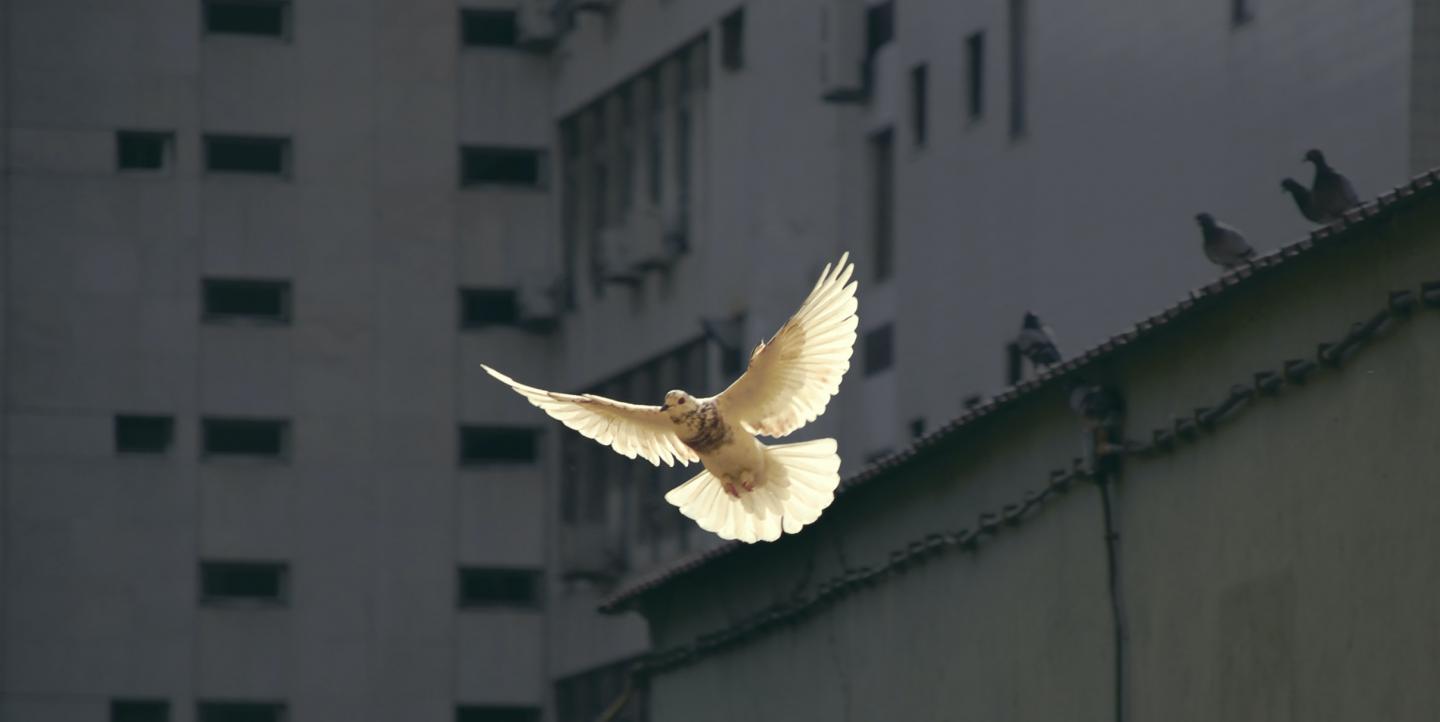When reporting on conflicts and crises, journalists need to be aware of both the negative consequences their reporting can have, as well as the potential their coverage has to promote peace in their communities.
This is precisely what the Center for Global Peace Journalism at Park University in Missouri focuses on in its curriculum.
“Peace journalism is when editors and reporters make choices that improve the prospects for peace in whatever story they are working on,” said Professor Steven Youngblood, the Center’s founder. “These choices, including how to frame stories and carefully choose which words are used, create an atmosphere conducive to peace and supportive of peace initiatives and peacemakers, without compromising the basic principles of good journalism.”
Youngblood has conducted seminars on peace journalism around the world, in countries such as Kosovo, Nigeria and Yemen. He also runs a blog on the practice, called Peace Journalism Insights.
How can reporters today best adhere to practices of peace journalism? Here are helpful tips from a recent training for African journalists hosted by Youngblood.
[Read more: "Slow journalism" startup hits its stride during the pandemic]
How to be a peace journalist
During the training, Admire Masuku, a journalism lecturer at the Harare Polytechnic School of Journalism and Mass Communication in Zimbabwe provided a series of peace journalism tips.
“When reporting about peace, journalists must stick to news values. Journalists must avoid morphing, distorting photos, staging or altering a scene. Journalists must secure alternative voices in their reportage and fact-check all the facts,” he said, adding that they must be impartial and capture a variety of perspectives.
Journalists should also be mindful of the language they use in their reporting, and how it can contribute to pre-emption, containment and de-escalation of conflict. “Use appropriate language and avoid manipulative and subjective language. Avoid bias and pandering to partisan interests and care about the welfare of people. Journalists must avoid profanity, hate speech [and misinformation, and] treat sources and subjects as human beings deserving of respect. Never treat sources as a means to an end,” he said.
Editorial independence is key in peace reporting, too, added Masuku: “Act independently, avoid associations that may compromise your independence and avoid undue influence from advertisers, [religious institutions], sponsors and politicians.”
According to Youngblood, it’s also imperative for journalists to understand that peace reporting shouldn’t be carried out only during times of conflict. Instead, they should regularly incorporate its principles in their daily reporting.
Peace journalism in Africa
Zimbabwean journalist Patience Rusare helped launch programs at the Makerere University Rotary Peace Centre to train reporters on how to write about conflict and cover political disputes.
“The trainings speak to the role of media in peace building, how media practices can prevent the escalation of conflict and promote its non-violent resolution,” she explained. “[They] cumulatively represent a rich collection of experiences and cases that skillfully tell the story of the connections between media and peace building in Africa and beyond.”
Through the programs, which are held in Zimbabwe, Nigeria and Liberia, Rusare explores core values of truth, social justice, equity, and balanced news reporting.
[Read more: Young newsroom reports on humanitarian issues in Nigeria and greater West Africa]
Characteristics of peace journalism
According to Youngblood, peace journalism has the following characteristics:
- It’s proactive, examining the causes of conflict. It looks for ways to encourage dialogue before violence occurs, and explores solutions.
- It acknowledges a common ground between parties, and rejects oversimplified “Us vs. Them” and “Good Guy vs. Bad Guy” reporting. Peace reporters reject propaganda from any source, and instead seek facts from all sources.
- It is balanced, covering issues/suffering/peace proposals from all sides of a conflict. It also gives voice to the voiceless, instead of just reporting for and about elites, and those in power.
A full list of tips from Youngblood’s Peace Journalism Insights blog can be found here.
Photo by Sunguk Kim on Unsplash.


